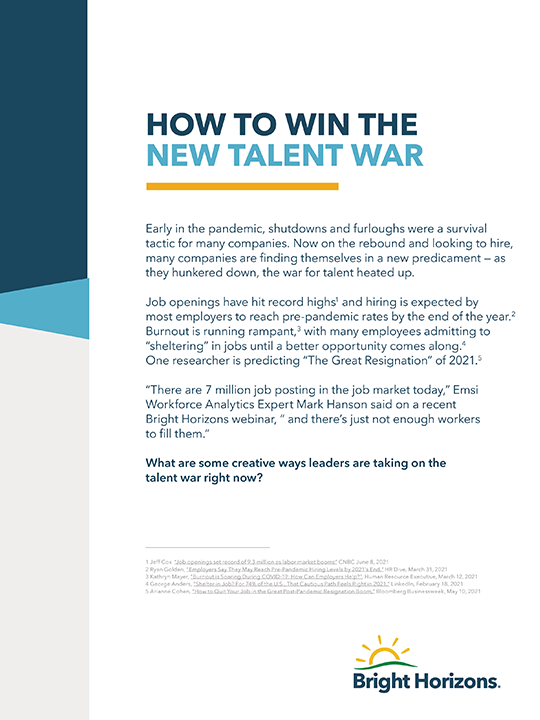What will it take to bring Diversity, Equity, and Inclusion – true DEI – into our workplaces? A lot of people say it’s education. Jared Fitzpatrick, senior vice president of diversity, equity, and inclusion for the Dallas Regional Chamber, says that’s a big part. But as he told us last week, real opportunity requires attention across talent strategies, not any one element. In part two of our conversation, he talks pipelines, developing talent, and the biggest myth about DEI roadblocks.
Bright Horizons: Are there other elements beyond recruitment?
Jared Fitzpatrick: Most definitely. You also have to look at pipelines. So I can tell you about another student. This person didn’t have a four-year degree, but we hired them into our IT department as an analyst. After two years of really good work, this employee felt they were overlooked for a promotion. And that was because the performance review still had that four-year degree requirement in it. Now it’s true, we provide money for undergraduate and graduate school. But that takes time. And this person was working full time. You can’t expect someone to get it done in a hurry. So with that in mind, you have to think about action and performance reviews and how everything aligns. If you’re bringing people in, but you’re still mandating that certain roles require the specific pedigree, you’re just adding to homogeny. If you really want to move the needle, you have to also look at job descriptions, your promotion requirements, performance review process – and see how it all fits together.
BH: So that’s another part of the opportunity equation?
JF: Absolutely. It’s one of the reasons we can talk about education as a very important thing – but not the only thing. If you hear someone saying, “We can’t find any talented Black people,” that’s a myth that neglects the long history and the structural pieces. There are talented people out there, but they might not be ready and waiting with degrees in the places you’re looking. If you’re only pulling from certain schools and talent pools, it is going to be hard to find that talent. You’ve got to widen your lens and create workforce development programs that both find and deliver opportunity.
BH: So employers who are looking to improve equity have to look beyond just trying to find people?
JF: Exactly. Employers who really want to make change will have to look at every part of their structure. And part of that comes from both your education and development program, and also how it aligns with recruiting and retaining people and every area of your talent process.
Beyond specific credentials, Jared says there are additional ways employers can use education to support DEI, such as partnering with colleges (especially two-year colleges) to provide internships, networking, interviewing, and all the core foundational skills you look for. All told, it’s a big commitment. But he feels hopeful.
“If you’d asked me at the beginning of this year, I might have had a different answer,” he told me. “But right now, I feel extremely hopeful. I really believe we may be able to make an impact around increasing educational equity and providing funding to the right people who really need the help.”





